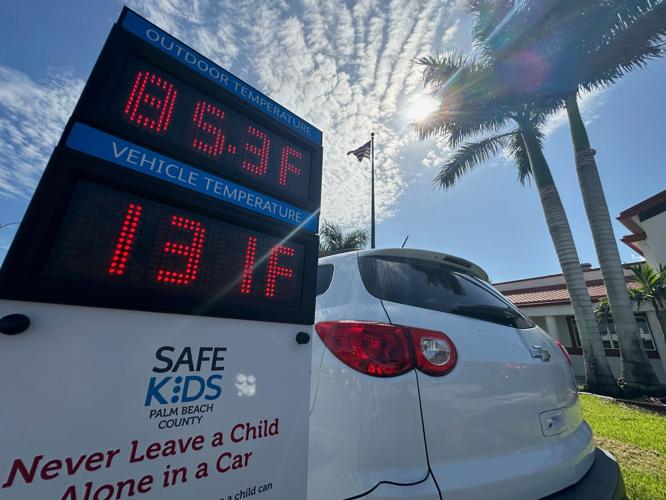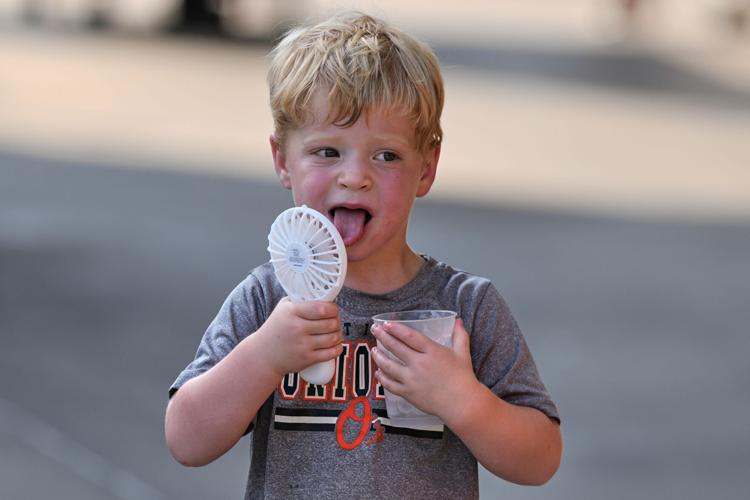FORT LAUDERDALE, Fla. — A  across the East Coast of the United States during the first week of summer has child advocates warning parents and caretakers about the risks of heatstroke to children left inside hot vehicles.
So far this year, nine  after being left unattended in vehicles in California, Florida, Louisiana, Maryland, , New Jersey and North Carolina, according to Kids and Car Safety, which collects data on hot car deaths. Five died in June.
Last year, 39 children in the U.S. died after being left in hot cars.
People are also reading…
Why hot cars are so dangerous for children
 keeps dialing up , scientists say.
However, the temperature outside doesn't have to be super hot for a child left in a vehicle to be affected by the heat, said Kathy Wall, director of .
“Inside, the vehicle can heat up 20 degrees in just 20 minutes,” Wall said. “So if you imagine it’s an 80 degree day, which in South Florida is a cool day, it could be over 100 degrees within 10 minutes inside the car."
Hot car deaths can happen any time of year, and since 1998,  reported a hot car death, according to the National Safety Council. In both 2018 and 2019, a record 53 children died after being left in hot cars.
About 80% of the heat rise in vehicles happens in the first 30 minutes of a child being left inside, when maximum temperatures can exceed 150 degrees Fahrenheit, according to data compiled by Jan Null, a certified consulting meteorologist at San Jose State University.
“Children sweat a lot less than adults do and their internal temperature can increase three to five times faster than an adult," said Capt. Karen Derogatis of Palm Beach County Fire Rescue. "So that’s why it’s just as important to make sure that your child isn’t left in the vehicle, especially during these rising temperatures."Â
It can happen to anyone
While it’s easy to place blame for leaving a child in a vehicle, even people trained to know the dangers made that tragic mistake, Wall said.
“It’s not a socioeconomic group, it’s not a cultural group,” she said. “This sadly has happened to doctors, it’s happened to dentists, it happened to school teachers, it’s happened to child care workers. Nobody is exempt from this.”
A parent who normally doesn't drop a child off at a day care facility might become distracted and forget that the child is in the vehicle, Wall said.
“It sounds crazy, but sometimes people get out of routines or are distracted, especially in today’s world," she said. "There’s lots going on in the news, lots going with families."
Distraction often leads to forgetting about a child in the backseat, she said, which is why it's important to create routines and reminders.
Create a reminder that a child is in the backseat
Wall encourages parents and caregivers to establish routines.
“We have an acronym, ACT," she said.
- A stands for avoiding leaving a child unattended in a vehicle.
- C stands for creating a reminder that works best for you. Authorities suggest leaving a personal item such as a purse or briefcase in the backseat so you'll have to open the back door before locking the vehicle.
- T is to take action right away. “If you see a child in a car, don’t try to figure out how long they’ve been in the car. Call 911 immediately," Wall said.
Some newer cars offer warnings for drivers to check the backseat for passengers.
Double checking the vehicle is key, Derogatis said.
"If you make it a common habit, just like you would look in their rear view mirror to see if somebody’s behind you, or if you look at your side view mirror to see if you want to switch lanes, make it habit to look in your rearview mirror, whether you have a child or an animal or anything, just to ensure that they are as safe as possible,” she said.
____
Associated Press video journalist Cody Jackson contributed to this report.

















